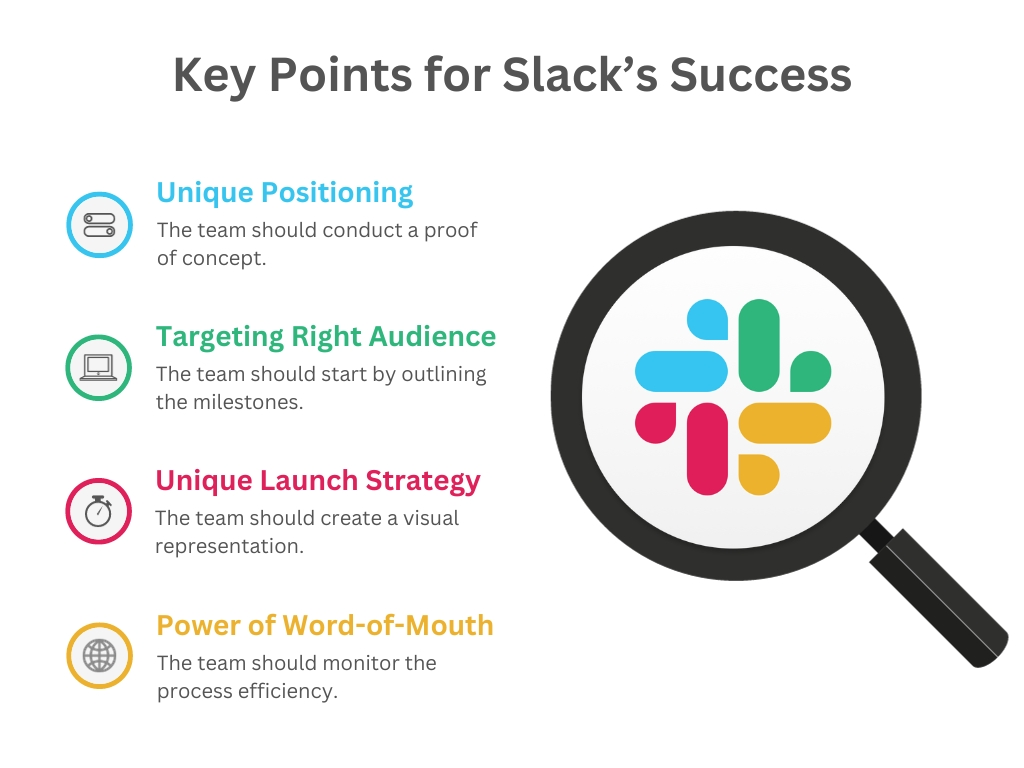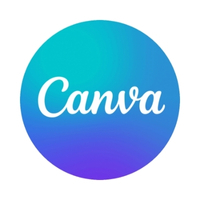- Used by 750,000 organizations worldwide
- Total valuation $26.5 billion as of 2023
- 54.1 million monthly active users.
- Used by 77% of the Fortune 100 companies.
We came across these mind-blowing stats about a team communication platform that didn’t even exist 10 years ago!
If you are a team player, then you have probably guessed by now which platform we are talking about.
Our case in hand is Slack.
Slack, which skyrocketed to be the fastest growing B2B SaaS business within just 10 years of its launch.
Slack- A Raging Success
Navigating the twists and turns of the business world ourselves, we became readily inquisitive to know what Slack has done that we, and probably many other startups, could learn from. We started to investigate the matter and found that Slack had taken brilliant approaches in particularly three areas that led to its massive success.
These are unique positioning, targeting the right audience, and their simple but highly effective marketing strategy. We dissect each of these for a fun lesson.

1. Unique Positioning of Slack
Slack positioned itself extremely effectively in the market as a new category of business software focused on streamlining team communication and collaboration. What we found quite interesting is that within a short time Slack effectively positioned itself as a “digital headquarters” for team collaboration and work – a central hub where all team communication and content flows through.
One the most unique offerings from Slack was freeing teams from reliance on slow, scattered email chains. On Slack you can communicate with the whole team like Whatsapp group messages, or you can chat with one particular person without involving others. Because of app integrations like Google Drive and Google Docs, teams can easily share and collaborate on files directly in Slack channels. Besides, Slack allows integration with project management tools like Asana and Trello which makes coordination easy on a single platform.
Unlike some other platforms, Slack is very easy to get on board and adapt. It has a simple interface and even a not-so-tech-savvy person can easily navigate within it. This platform is extremely scalable, which means even the free version offers one workspace, 10 app integrations, and 1:1 audio and video meetings.
2. Targeting Right Audience
If you have read our Review on Stripe then you might remember that Stripe didn’t target companies, but rather developers building software since they were the ones facing the actual challenge. Slack did something similar but of course, in their own way.
Before Slack, founder Stewart Butterfield and his team were working to develop a game called Glitch and he found that every existing channel to communicate with his team was insufficient and created confusion and misunderstanding. So, they decided to develop an internal communication tool for team collaboration for the sole purpose of developing the game efficiently. However, the game didn’t do well for different reasons, but Stewart realized that the communication tool they had developed had the potential to revolutionize team communication.
That is how Slack was born.
Unlike most enterprise software, Slack was designed for bottom-up adoption. It made the product accessible for small teams without involving C-suite approval, then expanded within organizations over time as more teams used it.
3. Efficient Marketing Strategy
Slack has adopted several offline and online marketing strategies to promote its platform, but here we only discuss the three most important strategies which contributed heavily in Slack’s magnificent growth.
i. Unique Launch Strategy
An usual method of software development companies to engage users and test their software is launching Beta versions. Slack never released a Beta version of Slack.
Or they did?
In 2013 Slack approached people to request invitations to try out a preview release of the software. This preview release was nothing but the launch of the Beta version of the platform, but founder Stewart Butterfield mindfully avoided the term ‘Beta version’ because people often perceive Beta versions as unreliable and unstable. Just by switching words, Slack managed to attract people while testing their product in the process.
The next masterstroke was limiting access to only those users who had requested an invitation. It helped create exclusivity and buzz around the new Slack product and also built interest among early adopters in the tech community. This also allowed Slack to better understand market demand and get a sense of which teams/companies were most interested in trying out their software. Actually, Slack adopted the lean methodology of slowly onboarding users to scale sustainably. This allowed them to test and refine based on early feedback.
ii. Power of Word-of-Mouth
Slack understood that no marketing campaign can be more impactful than the praises of satisfied users. This is another reason they didn’t make their platform ‘open to all’. Rather, they slowly onboarded users, provided them exceptional experience and encouraged them to spread the word.
Slack gave existing users incentives to invite their coworkers and colleagues to join their Slack workspaces through free bonuses and unlocking additional features. New users were welcomed with an easy and quick onboarding process along with fun onboarding tutorials, responsive support, and easy integration of new teammates into Slack workspaces helped new users quickly grab the benefits.
Users were also highly benefited by the other software integration and file sharing capability of the platform.
Slack also collaborated with influencers like Robert Scoble to help spread the word about their positive Slack experience.
iii. Smart Freemium Model
Slack’s wildfire growth from an internal communication tool to enterprise collaboration giant is a case study in how freemium models can harness grassroots adoption to proliferate products. Free basic functionality gave teams a way to observe value before making any buying decisions. This helped Slack spread into companies through grassroot usage. Once a few team members were hooked via freemium, Slack’s approachable interface made it really easy for additional teammates to read chat history for context and join the workspaces for no extra charge.
Unlimited messaging history was not capped in the free version like on some other freemium apps. This made it easier for freemium teams to continue deriving value without being inhibited. So, when additional teammates came on board or new projects kicked off, Slack was a plug-and-play solution for quick collaboration ramp up. For larger or global companies, the individual team-level adoption eventually led to sitewide paid contracts once executives realized how many employees were already using and enjoying Slack’s free version. So, grassroots usage led to enterprise deals.
Conclusion
Slack’s success story is an example of how identifying the pain point, setting the right positioning, and mindfully created marketing strategy can do wonders for a startup. Specially, startups which are offering tech-based platforms can benefit from Slack’s journey of creating highly effective yet simple to use products.
We regularly come up with interesting case studies where we understand the successes and failures of startups and draw out lessons for entrepreneurs.
Stay tuned and use our comment section for your queries and suggestions.







